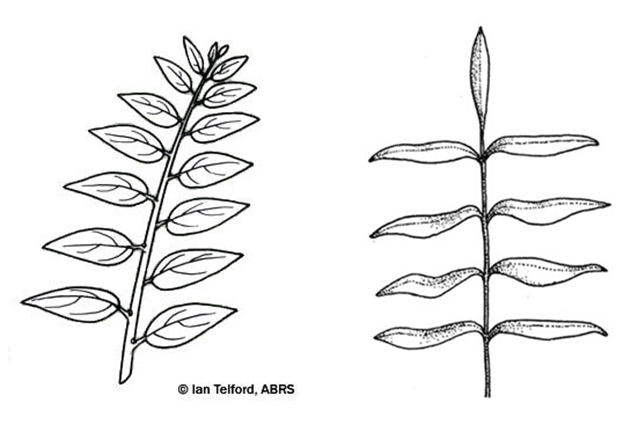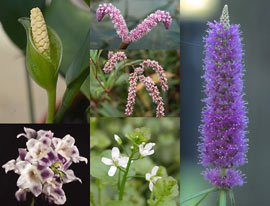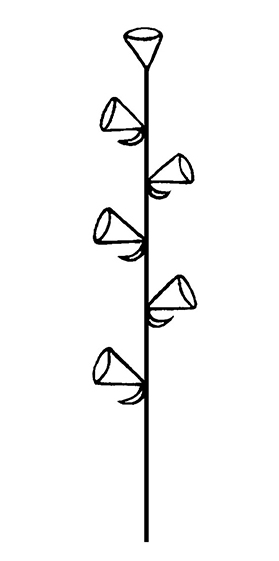Typha L.
bulrush, cattail, cumbungi
Typhaceae
Acorus, Butomus, Carex, Iris, Sparganium
cosmopolitancosmopolitan:
(adj) essentially worldwide in distribution
Typha angustifolia L.
T. domingensis Pers.
T. orientalis C. Presl
T. latifolia L.
T. laxmannii Lepech.
T. minima Funck
Several species have been introduced in countries around the world. Typha spp. appear to be highly adaptable and establish easily in most regions.
Typha species grow prolifically and are often considered pests; they block waterways and choke artificial marshlands.
tall, emergentemergent:
(adj) (syn. emersed) with parts raised out of the water; extending up out of the water
, narrow-leafed plant
Perennial. Stems erect with creeping rhizomerhizome:
(n) an underground stem, usually growing horizontally, from which both roots and shoots emerge directly; the thick, above-ground stem of ferns
 . Leaves distichousdistichous:
. Leaves distichousdistichous:
(adj) (of leaves or flowers) distinctly arranged in two ranks along an axis; leaves may be opposite or alternate
 , sheathed basally, alternatealternate:
, sheathed basally, alternatealternate:
(adj) (of leaves) bearing one leaf per node; placed singly on the stem at different heights
 , forming a compact basalbasal:
, forming a compact basalbasal:
(adj) at or pertaining to the base, or point of attachment
rosetterosette:
(n) a radiating cluster of leaves, usually close to the ground at the base of a plant
 ; leaf bladeblade:
; leaf bladeblade:
(n) (syn. lamina) the flat, expanded part of a leaf, frond, or petal (excluding, e.g., the petiole)
 linear, emergentemergent:
linear, emergentemergent:
(adj) (syn. emersed) with parts raised out of the water; extending up out of the water
; marginmargin:
(n) edge; rim
entire. Inflorescenceinflorescence:
(n) the arrangement of flowers on the floral axis
 a single, cylindricalcylindrical:
a single, cylindricalcylindrical:
(adj) forming a nearly true cylinder
spikespike:
(n) an indeterminate, unbranching inflorescence of sessile flowers or flower clusters on a usually elongated axis
 ; upper flowers female; lower flowers male; flowers densely packed, individual flowers barely recognizable. Dispersal by numerous aerial and floating seeds and rhizomes.
; upper flowers female; lower flowers male; flowers densely packed, individual flowers barely recognizable. Dispersal by numerous aerial and floating seeds and rhizomes.
all types of shallow waterways and wet ground
Often forms dense monocultures in shallow water; an important refuge for many animals associated with waterways.